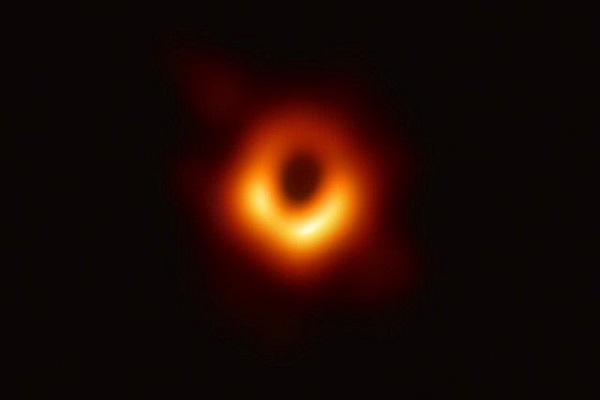A black hole says ‘cheese’

You are looking at the first-ever image of a black hole. Stunning, isn’t it? The fuzzy doughnut-shaped ring of gas and dust traces the outline of Powehi, a supermassive black hole, at the heart of the Messier 87 galaxy, 55 million light years away from the earth. With a mass that is 6.5 billion times that of the Sun, this one is humongous. The image was captured by the Event Horizon Telescope (EHT), a network of eight linked telescopes, and unveiled by scientists on April 10.
Scientists have predicted the existence of black holes since the 18th century. Though they knew for a fact that supermassive black holes lurk at the centre of galaxies and smaller ones found all over the universe, they had not seen one or captured one in photographs until now. Before this, every image of a black hole we saw online or in print was an illustration. This is the first direct visual evidence that prove the existence of black holes.
The Event Horizon Telescope also focused on Sagittarius A*, the black hole at the centre of the Milky Way. The image of Sagittarius A* is expected to be released later.
What are black holes?
-
– Black holes are regions in space, where the gravity is so immense that even light cannot escape from their grasp. The boundary around the mouth of the black hole beyond which nothing can escape is called event horizon. It traps everything that comes to this point.
-
– Black holes are formed when giant stars explode at the end of their life-cycle. This explosion is called a supernova. When a star collapse under its own weight, it results in the concentration of a huge amount of mass densely packed in an incredibly small area. Think of a star ten times more massive than the Sun squeezed into a sphere approximately the diameter of Bengaluru. The region is so dense that it warps the fabric of space and time.
-
– Black holes can grow huge as they continue to attract light, dust and gas around them. They can even absorb other stars.
- – A black hole cannot be seen, as its immense gravity does not allow any detectable radiation to escape, so it appears as an opaque space. (Note: The first ever image shows the black hole’s event horizon, the swirl of gas and dust, slowly falling into the black hole. In the middle is the shadow of the black hole.)
Karl Schwarzschild was the first to use Einstein’s theory of general relativity to show that black holes could indeed form. In 1967, a physicist named John Archibald Wheeler came up with the term “black hole”.
Photos: Wikimedia Commons/NASA and Flickr